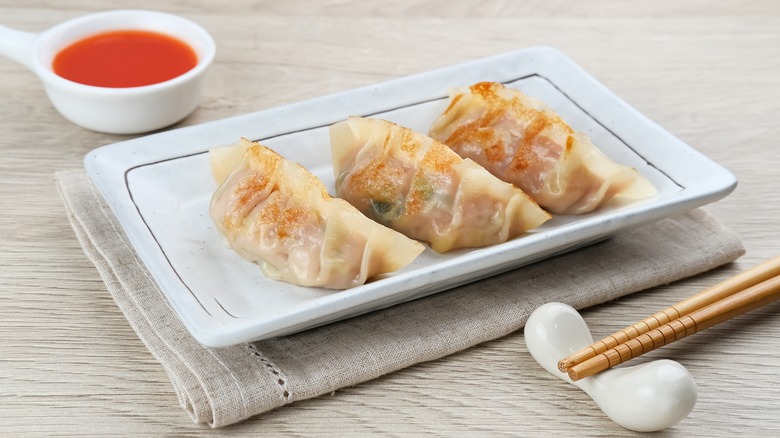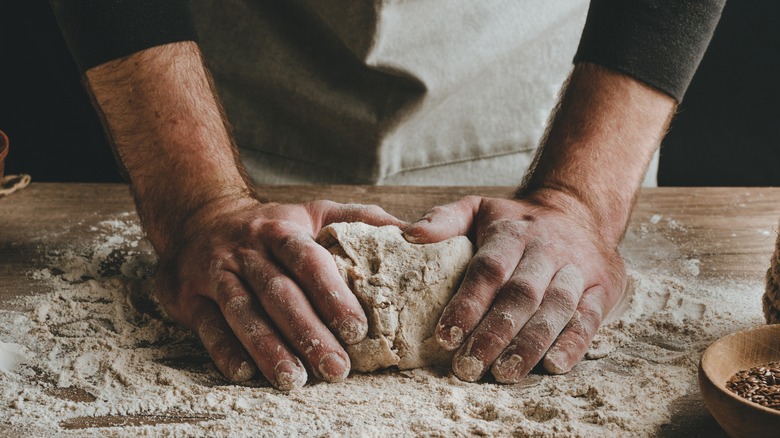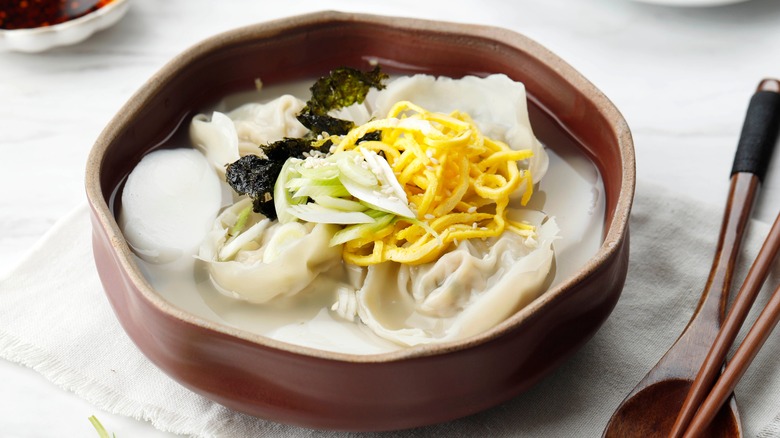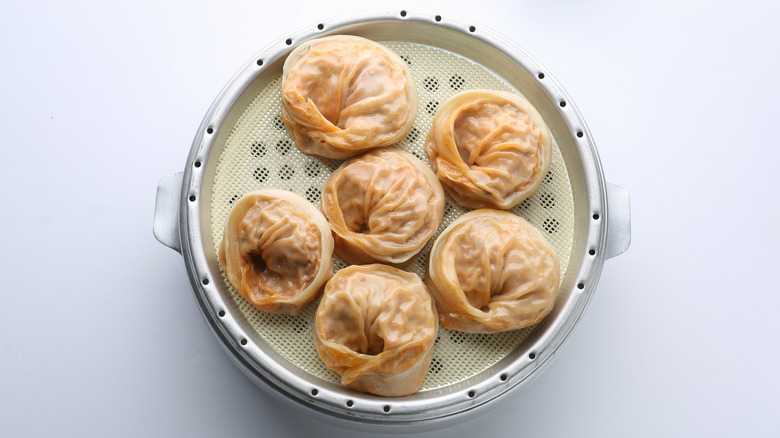What Makes Korean Mandu Dumplings Unique?
Order at a Korean restaurant, and the table will get covered quickly. As a sign of hospitality, many eateries offer a smattering of banchan, or small dishes, free of charge. From spinach and soybeans to seafood, some diners mistake these foods as appetizers when instead, they're meant to be served in conjunction with a meal. Many of these offerings are vegetarian — linking to Korea's Buddhist and agricultural heritage, and often employ fermentation and pickling as preservation.
Such an abundance of variations for only the side dishes showcases the extensive range of Korean cuisine. Built upon culinary traditions from the Royal court, the cuisine favors using many culinary techniques in one meal. And best of all, eating is a convivial affair — all dishes hit the table simultaneously, meant to be shared. With such an appetite for variability, it's no surprise that Korean dumplings also evade uniformity.
A dish that is an essential component of Korean cuisine, the dumplings likely entered the peninsula by nomadic Mongolians in the 14th century. Introduced at a time when Korea was in the Buddhist Goryeo dynasty, which encouraged vegetarianism, the influx of new people expanded the dish to meat-based preparations as well. Such a storied history means there's an abundance of mandu variations. Let's dive into their many forms.
How to make mandu dumplings
Of course, there's no dumpling without dough — called mandu-pi for these tasty Korean creations. The dish relies on a simple flour base with only water and salt. After thoroughly combined, the mixture is allowed to rest for 20 minutes on the counter, after which it's kneaded. It's then cut into smaller pieces and rolled into circles, which can be prepared into mandu right away or frozen for later use.
While there is a wide variety of stuffings, a vegetable and pork mix is an especially popular combination. Other fillings include chicken, glass noodles, tofu, and vegetable options like cabbage, chives, and leafy greens. Common seasonings are chili, rice wine vinegar, lime, soy sauce, and garlic paste. Controlling the water content of the filling is vital — it needs to be moist but not destructive to the dumpling wrapper.
When using cabbage, for example, it's necessary to soak it in salt water to squeeze out moisture. And if pork is in the mix, it's added raw. Once assembled, filling is scooped into the middle of the dough, which can be folded into various shapes, from a half-moon to a pleated form — although half-moon is the most popular. To assemble, simply wet the outside of the wrapper, fold it in half, then pinch together the edges. Next, tuck the pinched edges towards each other to form the half-moon shape. Mandu are then steamed, boiled, deep-fried, or pan-fried to completion.
How are mandu dumplings served?
Consumed as street food, in the home, and at elevated restaurants, these doughy bundles can be found in almost any culinary setting. In addition to being eaten as a snack, mandu are added to soups and salads and enjoyed as side dishes. Well-known dishes include tteok mandu guk, a beef stock, rice cake and mandu soup, and bibim mandu, a sesame-dressed salad with lettuce and dumplings.
When eaten on their own, mandu are often served with the same soy and sugar-based dipping sauce that accompanies kimchi pancakes. Past such popular renditions, mandu's components are highly variable — every household concocts its combination of meat, seafood, vegetables, or a mixture of fillings. Often made together as a family, mandu dumplings are typically crafted in large batches and then frozen for later consumption. They're especially popular for celebrations, such as birthdays and New Year.
Internal fillings are frequently trademarked through how the dumplings are folded. Various regions of Korea favor certain ingredients as well as shapes. And while visually similar to Japanese gyoza, don't confuse the two dumpling styles. The Korean dumplings are more variable, often made with a thicker dough, more broth, or other juicy contents; they aren't dependably served with the trademark soy-based gyoza sauce.
Mandu dumpling varieties
Mandu are often categorized by how they're cooked — jin mandu means steamed, tuigin mandu notes deep-fried, gun mandu are pan-fried, and mul mandu signifies boiled. A further differentiation summarizes the fillings, with names like yachae referring to vegetable dumplings, gogi to meat, and many more. Finally, chefs imbue their personalized touch with each preparation, creating a unique blend of ingredients. Experimentation is encouraged — a great way to test a filling's flavor before prepping a dumpling batch is by microwaving a teaspoon of the filler for around thirty seconds.
Mandu's incredible diversity showcases the regional nature of Korean cuisine. Many cities across the peninsula, including North Korea, possess a characteristic dumpling. For example, Kaesong, North Korea, is known for specifically a square-shaped mandu called Pyeonsu. During the summer, the dish is boiled, stuffed with vegetables, and served with vinegar soy sauce. During the winter, meat is added, and the mandu are served in the beef broth for a heartier take.
Alternatively, a vegetarian variation from Daegu, Korea, is called NapJak Mandu. These unusually shaped flat dumplings are filled with glass noodles and garlic chives and boiled for cooking. They're then served with soy sauce, sugar, and red pepper dipping sauce. Such an abundance of regional distinction means there is a lot of mandu to dig into — so make sure to snag some at your most local Korean spot or try your hand at making your own at home.



